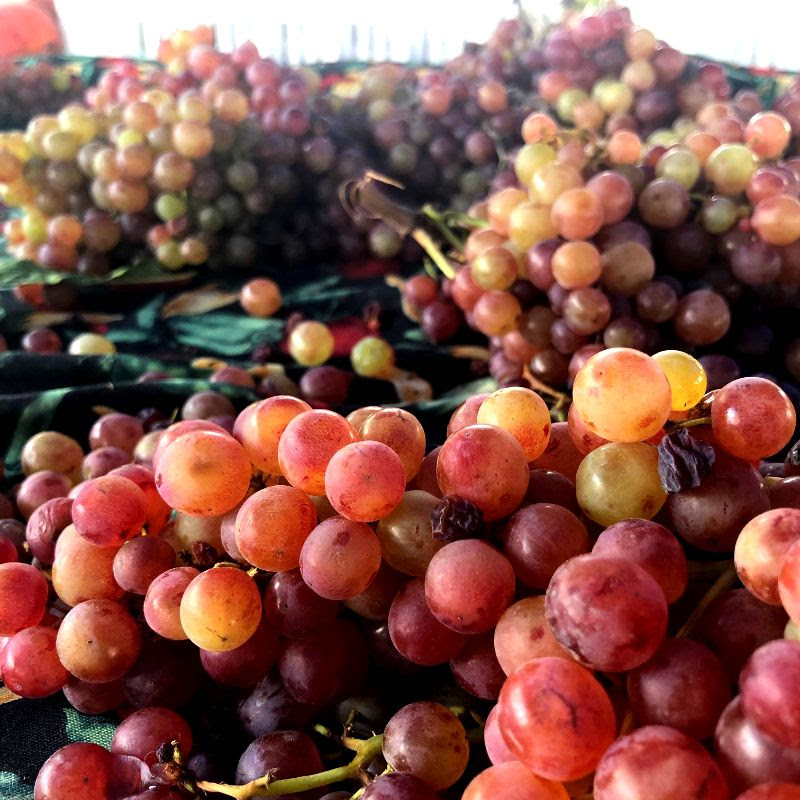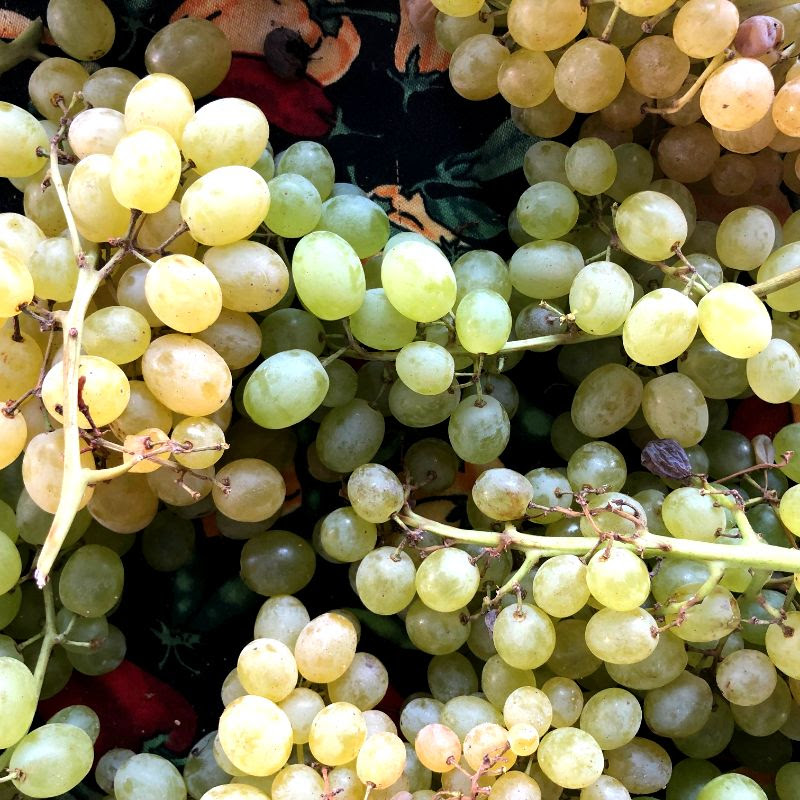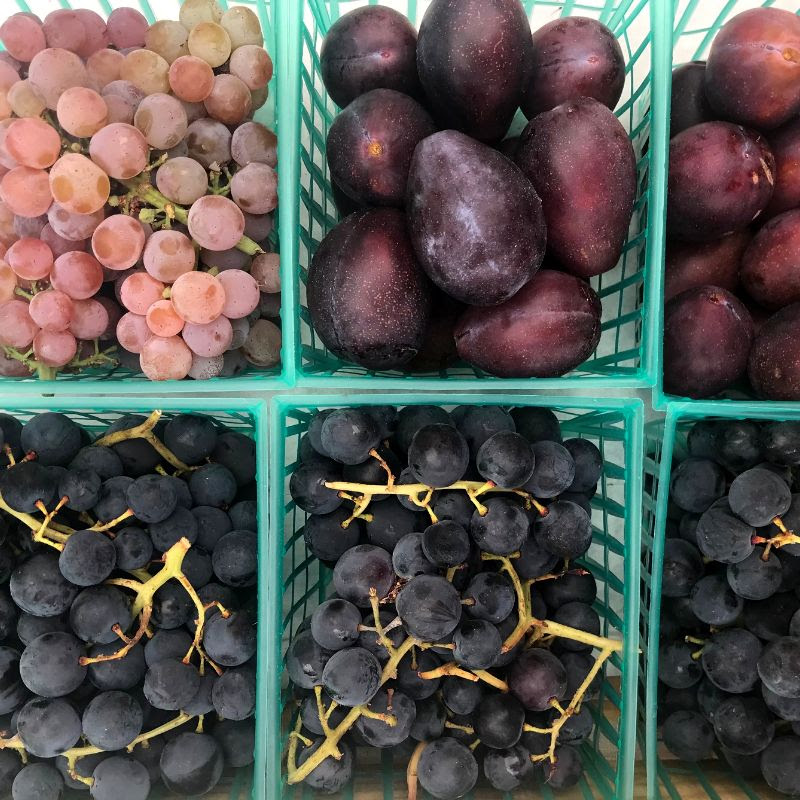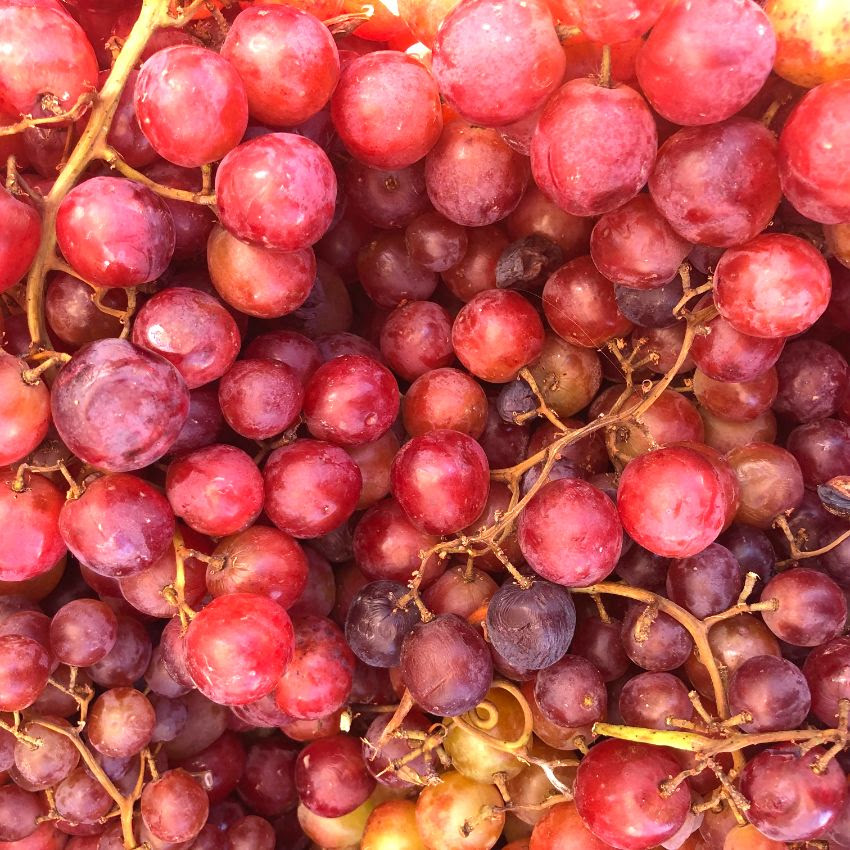- grape6
- grape3
One of the greatest things about fall approaching is market grapes! We all know they are the perfect snack, but we feel like these little fruits deserve a bunch (ha) more credit and attention! Sure, you can get them at the grocery store year round, but it’s only fresh market grapes in the late summer and early fall that will show you just how much depth of flavor grapes can really have.
Grapes are technically berries and there are many types including green, red, black, yellow and pink. They grow in clusters and come in seeded and seedless varieties, and are packed with nutrients. You’ll find loads of potassium, calcium, magnesium, antioxidants, vitamin c, vitamin k, and anti-inflammatory properties!
Grapes are oh so versatile and can be used in both sweet and savory applications. You can add fresh grapes to salads, parfaits and cheese platters, for both color and flavor. Or, throw them on the grill or roast them until blistered to bring out jam-like, caramelized notes perfect served alongside meat, chicken and fish. Dot fresh focaccia with dark grapes or sauté Concord grapes for a simple sauce to pair with pork tenderloin. Slice white or green grapes and add to rice stuffing with roasted chicken, or do a quick pickle with grapes for an easy appetizer or a great addition to a cheese plate!
So maybe we’ll lose tomatoes soon, but, fill the void with juicy local grapes all fall long at the Chico Saturday Farmers’ Market!
- grape2
What’s the White Stuff?
Ever wonder (and are maybe even turned off by) that white stuff on grapes? Well it turns out you actually want grapes with that powdery white coating. It’s not a pesticide, but it is actually a natural yeast that grows on the skin. It protects the grape from things like moisture loss and decay, and is produced by the grape itself. The bloom is mostly made of a waxy substance called oleanolic acid, and some bakers use grapes in homemade sourdough starters! That “bloom” is what gives grapes their character. A word of caution, though: Most conventionally-grown grapes are treated with pesticides, so make sure to seek out organic and buy your grapes from the farmers’ market!
- grape4
Choosing and Storing
Grapes should be plump, with smooth unbroken skins, and be firmly attached to the stems. Avoid baggy, wrinkly skins. The green ones are at their sweetest when they have a pale-yellow hue. The color should be bright and vibrant. Grapes do not continue to ripen on the counter like many fruits, so you want to look for grapes that were picked at the peak of perfection.
Ask the farmer if you can touch the grapes and then go ahead and get handsy. Give the bunch a little shake; the grapes should stick to the vine, not fall off all over the place. That’s is a sign the grapes were harvested from the larger vine recently.
Discard damaged grapes, place bunch in a plastic bag, and refrigerate up to three days. To avoid destroying the bloom, rinse just before using.
- grape1
Great Grape Facts!
- Peak growing season in North America is July to December.
- Grapes may be one of the earliest cultivated fruits on Earth. The Greeks harvested the berry for wine-making and the Romans later perfected the practice, understanding the importance of pruning, climate, and proper storage.
- There are three main species of grape (European, North American, and French Hybrids) and thousands of varieties.
- According to the Food and Agriculture Organization, approximately 71% of world grape production is used for wine, 27% as fresh fruit, and 2% as dried fruit.
- Grapes grow in clusters of 6 to 300 and are considered a “true berry.”
- An estimated 10,000 types of grapes exist in the Vitaceae family, only around 1,300 of these are used in winemaking.
- All 50 states produce the fruit, with California, Washington and New York taking the lead, but the majority of grapes grown in the US are from California.
- Soil and lack of grape-feeding pests is what makes California an ideal growing environment for grapes.





